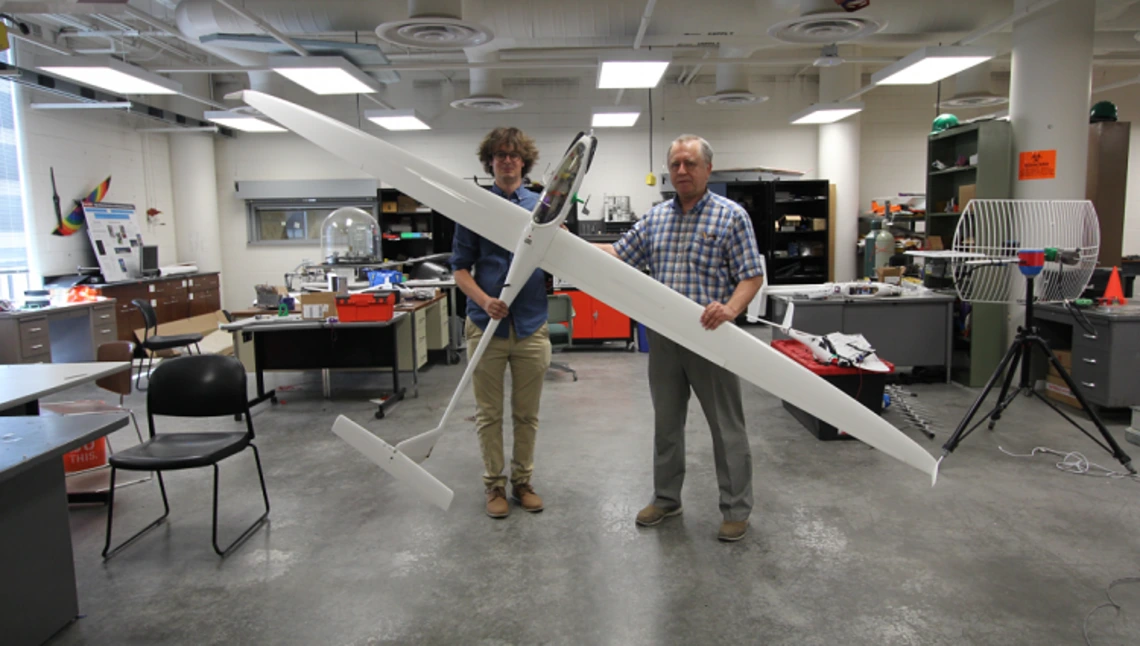AME Team Designs Motorless Planes to Explore Mars

A team of University of Arizona engineers is designing a motorless sailplane that can explore Mars for days at a time, using only wind energy for propulsion. Equipped with flight, temperature and gas sensors as well as cameras, the sailplanes would weigh only 11 pounds each. The team details its proposal in a paper published in the journal Aerospace.
AME professor Sergey Shkarayev and aerospace doctoral student Adrien Bouskela are developing the lightweight, wind-powered sailplanes that use several different flight methods, including simple static soaring when sufficient vertical winds are present.
"Other technologies have all been very limited by energy," said Bouskela, the paper's first author. "What we're proposing is just using the energy in situ. It's kind of a leap forward in those methods of extending missions. Because the main question is: How can you fly for free? How can you use the wind that's there, the thermal dynamics that are there, to avoid using solar panels and relying on batteries that need to be recharged?"
The planes can also use a technique called dynamic soaring, which, like an albatross on a long journey, takes advantage of how horizontal wind speed often increases with altitude – a phenomenon particularly common on Mars.
Dynamic soaring looks something like the S-shaped pattern skiers use to control their descent down a mountain. However, every time the sailplane changes directions, it also begins changing altitude – and rather than slow the sailplane down, the maneuver helps it gain speed. The planes fly at a slight upward angle into the slow-moving, low-altitude wind. When they reach the faster, high-altitude wind, they turn 180 degrees and let the high-speed wind power them forward at a slight downward angle. When they start to run out of energy from the high-speed wind, they repeat the process, weaving their way forward. With this nimble maneuvering, the sailplanes can continually harvest energy from the atmosphere, flying for hours or even days at a time.
"It's almost something you have to see it to believe," said AME associate professor and paper co-author Jekan Thanga.
